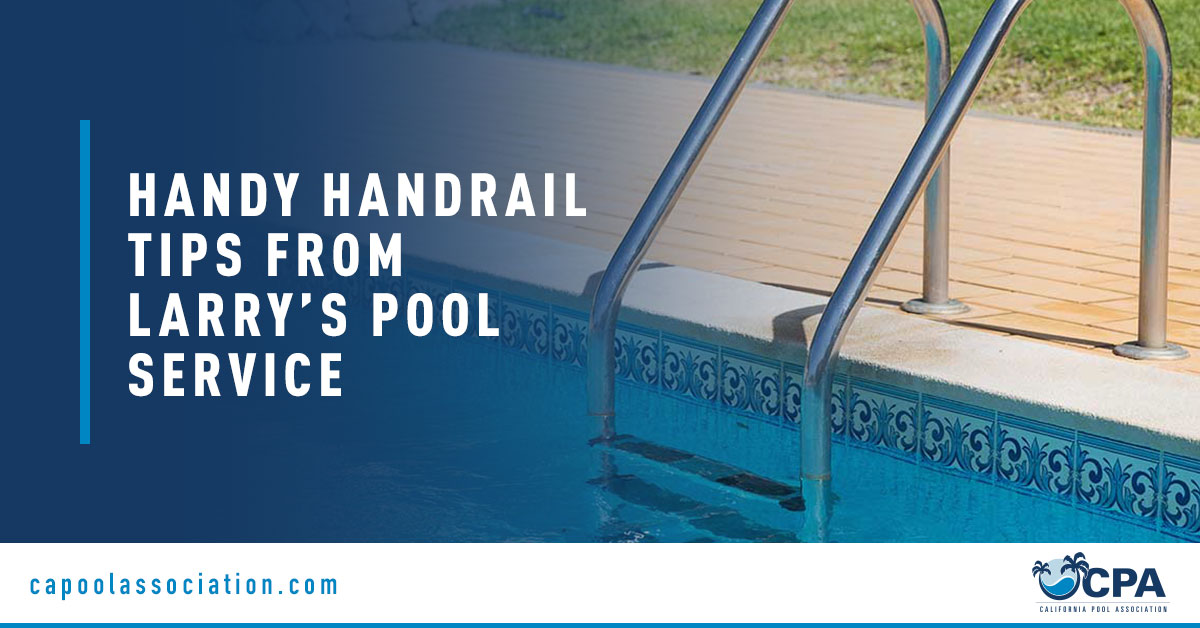
“Welcome to all members of California Pool Association. We are on our way to becoming the top insurance provider in our industry. We will be attracting new members at all the best trade shows across America. Our industry was in need of a provider with insight into what type of coverage each business large or individual needs to safely operate, whether it be service repair or remodel. On occasion I will try to provide information on projects some of our companies will be dealing with.” – Larry Walters
Handrails and grab-rails. All rails are designed to be bonded with #8 bond wire. This wire is a continuous loop connected to all equipment the pool shell the light and the hand rails and grab-rails. This is to prevent from electrical shock when entering and exiting a body of water. This is not the same as grounding. I have replaced numerous rails that have not been bonded. This occurs often when you are required to change the spa handrail to a dual 3 bend. Most rails are attached to a permasocket that has a bond wire attached. Many rails are cemented directly into the decking. A permasocket is designed with a pinch bolt under the chrome cover to tighten down the rail. The decking must be cut the socket removed you need to cut the existing bond wire. If necessary add a split nut to add a extension piece of bond wire. Usually this needs to be done for ease of placement. This bond wire will need to be added to both rails, One method i use is to saw cut a line with a grinder to the expansion joint. Manipulate the bond wire into the cut and expansion joint between the coping and decking. Cut another line to the location of the additional dual 3 bend rails. Permasockets have an attachment point for the bond wire. There are additional methods to attach the bond wire that work great. There are county codes specific to the placement of the rail as it relates to the front edge of the last step the height of the rail measured from the front edge of steps. Check with your county for the spec sheet. If you don’t find a bond wire you have a few options. You can remove more gunite to get a piece of the pool shell and attach a bond clamp. You need to be careful not to punch through the plaster unless it is a re plaster. You can install high quality plastic rails that do not require bonding but check with your local county Health Dept. They also do not get hot to the touch a nice feature in the Desert climates. Your finish rails should be set level i use high strength fast set concrete. Remember bonding the rails is important. It protects you your client and your insurance.
-Larry Walters Pool Service